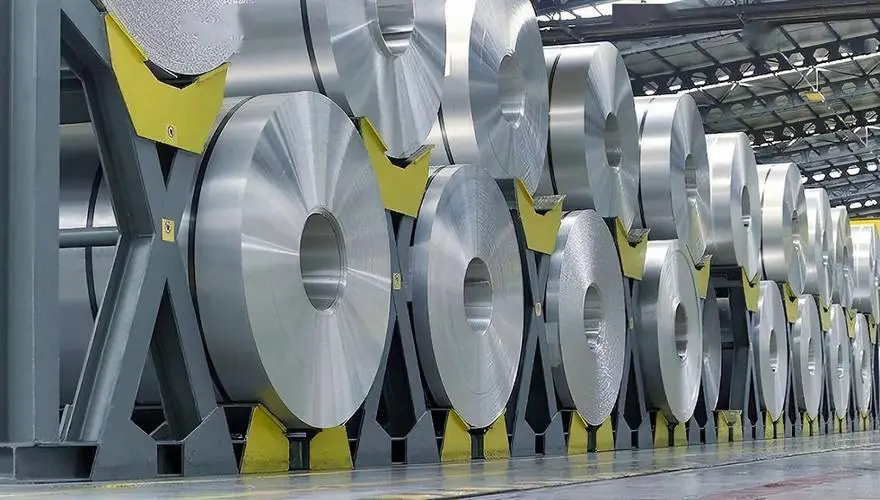国家发展改革委等部门关于印发《电解铝行业节能降碳专项行动计划》的
观点 | 碳捕集与封存:挑战 推动因素和部署机会
观点 | 碳捕集与封存:挑战 推动因素和部署机会CCS 碳捕集与封存 二氧化碳大气网讯:Carbon capture and storage, or CCS, is a prove
大气网讯:Carbon capture and storage, or CCS, is a proven and safe technology vital to achieving climate targets, as highlighted by the IPCC and other credible organisations, studies, and governments. Over the past three years, the CCS project pipeline has strengthened, and facilities continue to come online. Today, there are 20 commercial large-scale CCS facilities in operation. Combined, these facilities capture and permanently store around 40 million tonnes of CO2each year.
正如 IPCC 和其他权威机构、研究和政府所强调的那样,碳捕集与封存(CCS)是一种经过验证的安全技术,对于实现气候目标至关重要。在过去的三年中,筹备中的 CCS 项目持续进行,设施陆续上线。迄今为止,有 20 座大规模商业 CCS 设施正在运行。这些设施共计每年可捕集并永久封存约 4000 万吨二氧化碳。
However, to meet climate mitigation targets, an estimated 2000-plus large-scale CCS facilities must be deployed by 2050. In order to achieve this scale of deployment, it is crucial that the challenges, enablers and opportunities for CCS are considered, understood, and addressed.
但是,为了达到减缓气候变化的目标,到2050年必须部署大约 2000 多座大规模 CCS 设施。为了实现这种部署规模,理解 CCS 的推动因素和部署机会、应对 CCS 相关的挑战至关重要。There is no doubt the main challenge to CCS deployment is commercial. CCS requires investment in capital-intensive long-lived assets. In addition to the capture plant, those assets include CO2transport pipelines and geological storage resources which cost hundreds of millions of dollars to appraise, build, and develop. The service CCS provides, emissions abatement, has no or low value in most markets. Whilst capture technologies are well developed and proven, their application in most industries has been very limited which increases perceived risk. In most jurisdictions, regulations covering the geological storage of CO2are absent, creating compliance risk. Long term liability for stored CO2in those jurisdictions generally rests with the operator in perpetuity which can disqualify investment.
毫无疑问,CCS 部署的主要挑战是商业化。CCS 要求对资本密集型的长期资产进行投资。除捕集厂外,这些资产还包括二氧化碳输送管道和地质封存资源,这些资产的评估、建造和开发耗资数亿美元。CCS 提供的减排服务在大多数市场中没有价值或价值很低。尽管捕集技术已经得到很好的开发和验证,但是在大多数行业中的应用仍非常有限,这增加了人们对风险的感知。在大多数辖区中,缺少有关二氧化碳地质封存的法规,这会产生合规风险。在这些辖区内,封存的二氧化碳长期责任通常需由运营商永久承担,从而导致投资失败。Essentially, the well-established and familiar business models, structures, and practices that exist in mature industries and play a significant role in reducing perceived investment risk have not yet developed for CCS. The resulting risk premium on the cost of capital further impairs the investability of CCS projects. In most circumstances, CCS investments are net present value (NPV) negative.
本质上,CCS 缺乏成熟行业中已然稳定且广为人知的业务模式、结构和实践,它们在降低投资风险中起着重要作用。由此产生的资本风险进一步损害了 CCS 项目的可投资性。在大多数情况下,CCS 投资的净现值(NPV)为负。In addition to commercial challenges, there is significant skepticism of CCS amongst those with little knowledge of it. Often, concerns are held about the safety of CO2transport and storage. Most assume that CO2is stored in the gaseous phase and thereforemust leak, possibly catastrophically. It is also common for CO2storage to be confused with hydraulic fracturing or for individuals to be concerned about induced seismicity, or that natural seismicity will cause leaks.
除了商业挑战之外,对 CCS 知之甚少的人还对 CCS 表示怀疑。通常,人们对二氧化碳运输和封存的安全性感到担忧。大多数人以为二氧化碳以气相封存,因此必然会泄漏,且可能会造成灾难性的泄漏。有人将二氧化碳封存与水力压裂相混淆,有人担心诱发地震,或者自然地震会引起泄漏,这些误解司空见惯。In fact, CO2is not flammable or explosive like natural gas. It is not toxic like refrigerants used in refrigerators and air conditioners. A catastrophic leak to the atmosphere from a depth of more than one kilometeris virtually impossible. CO2storage reservoirs are operated below the fracture pressure of the rock formation with a margin of safety – there is no “fracing”. Any seismicity resulting from CO2injection is very minor, requiring instrumentation to detect it. Earthquakes, such as those regularly experienced in Japan,have not caused any leakage of stored CO2.
实际上,二氧化碳不像天然气那样易燃或易爆,也不像冰箱和空调中使用的制冷剂那样有毒。从地下一公里深度向大气发生灾难性泄漏几乎是不可能的。二氧化碳封存层在岩层的破裂压力以下操作,具有一定的安全边际——不存在“压裂”。由二氧化碳注入引起的地震活动都非常小,需要仪器才能监测到。地震也没有造成封存的二氧化碳泄漏,例如日本地震频发,但未发现泄漏。Despite these public misconceptions and commercial challenges, there are circumstances wherespecific policies and commercial opportunitieshave successfully enabled CCS investment. Twenty-four CCS facilities are either operating or in construction, all having made a positive financial investment decision.
尽管存在这些公众误解和商业挑战,但特定的政策支持和商业机会仍成功促成了 CCS 投资。有24座正在运行或建设中的 CCS 设施都做出了积极的财政投资决定。The first enabler is high concentration CO2gas streams and access to high-quality CO2geological storage resources for which data necessary for appraisal is available. This coincidence of circumstances reduces the cost associated with capture, storage site appraisals, CO2transport, and CO2storage operations.
第一个推动因素是高浓度的二氧化碳气流和高质量的二氧化碳地质封存资源提供了评估所需数据,从而降低了捕集、封存地点评估、二氧化碳运输和二氧化碳封存运行的相关成本。The second enabler is a bankable and material source of revenue. Eighteenexisting CCS facilities—operating or in construction — sell or utilise CO2for enhanced oil recovery (EOR) which s a long-term secure revenue stream. In the United States, tax credits issued undersection 45Q of the Internal Revenue Code[1], have been an important enabler of the six CCS facilities that have commenced operation in there since 2011. Several new projects that will be eligible for tax credits are now progressing through studies.
第二个推动因素是丰厚、切实的收入来源。现在有18座 CCS 设施(运行中或在建)通过出售或利用二氧化碳提高采收率,从而成为长期稳定的收入来源。在美国,根据《国内税收法》第45Q 条[1]签发的税收抵免政策是6个自2011年以来开始运行的 CCS 项目的重要推手。现在有几个符合税收抵免条件的新项目正在开展相关研究。Carbon pricing can also support the business case for CCS. A carbon tax introduced in Norway in 1991 incentivised the development of the Sleipner and SnØhvit CCS projects. Regulation has played a role in incentivising investment in CCS by proscribing emissions above a certain level. Chevron recognised the need to reduce CO2emissions from its Gorgon LNG project in Australia and included CCS in its Environmental Impact Statement. The approval of the project by the Western Australian Government subsequently included a mandatory condition to inject at least 80 per cent of the reservoir CO2produced by the gas processing operations.
碳定价还可以提高 CCS 商业可行性。1991年在挪威推出的碳税激励了 Sleipner 和SnØhvit CCS 项目的开发。相关法规通过禁止过量排放在 CCS 投资方面发挥了激励作用。雪佛龙公司认识到需要减少澳大利亚高更液化天然气项目的二氧化碳排放,并将 CCS 纳入其《环境影响声明》。西澳大利亚州政府随后批准了该项目,并加入了一项强制性条件,即要求至少80%的天然气处理过程产生的储层二氧化碳注入地下。The introduction of an emissions performance standard for power generation in 2011 in Saskatchewan was a driver of the development of the Boundary Dam CCS facility. Without CCS, the Boundary Dam coal unit would have been required to close and be replaced by a natural gas combined-cycle plant. At that time, the expectation of higher and more volatile gas prices made CCS retrofit of the coal unit the highest NPV option.
2011年萨斯喀彻温省引入了发电排放性能标准,推动了边界大坝 CCS 项目建设。如果没有 CCS,边界大坝将需要关闭燃煤机组并由天然气联合循环电厂代替。当时,人们预计天然气价格更高、更不稳定,从而使燃煤机组 CCS 改造成为净现值最高的选择。The third enabler is transparent and predictable regulation of access to pore space for the geological storage of CO2. Investors must be confident that they can secure the right to exploit geological storage resources and manage compliance risk associated with CO2storage operations. Further, it is critical for governments to implement awell-acterised legal and regulatory frameworkthat clarifies operators’ potential liabilities for stored CO2. One excellent example is the framework implemented by the Australian Government whereby the storage operator bears the risk of short-term liability during the operational period of the project and for a specified post-closure period.
第三个推动因素是对地质封存的二氧化碳在孔隙间情况进行透明、可预测的监管。投资者必须确信,他们能够获得开采地质封存资源的权利,并管理二氧化碳封存相关的合规风险。此外,政府必须实施一套清晰的法律和法规框架,明确运营商对封存二氧化碳的潜在责任。例如澳大利亚政府实施的框架规定,封存运营商在项目运营期间和关闭后的一定时间内要承担短期责任风险。The fourth enabler is asupportive government. Governments can provide financial support in the form of capital grants, operational subsidies, or concessional loans for specific projects if necessary. Governments can also support the establishment of CCS hubs, which significantly lowers the cost of CO2transport and storage through economies of scale, by being the first investor in CO2transport and storage infrastructure.
第四个推动因素是政府支持。必要时,政府可以通过拨款、运营补贴或优惠贷款的形式为具体项目提供财政支持。各国政府还可以成为二氧化碳运输和封存基础设施的首个投资人,支持建立 CCS 枢纽,通过规模经济显著降低成本。In addition, governments have an important role to play in building public confidence and understanding of the necessity of CCS in meeting climate targets. The United Kingdom Committee on Climate Change provides an excellent example in theirMay 2019 reportdescribing how the UK can achieve net-zero emissions by 2050. Their analysis demonstrates the need for every possible low emissions and energy efficiency technology including CCS to mitigate emissions from industry, power generation, and hydrogen production. importantly, it identified that 179Mt of CO2must be captured and stored in the UK in the year 2050.
此外,政府在建立公众信心、加强公众理解 CCS 对于气候目标达成的必要性方面可以发挥重要作用。英国气候变化委员会在其2019年5月的报告中提供了一个很好的例子,描述了英国如何在2050 年前实现净零排放。他们的分析表明,工业、发电和制氢等行业的减排需要包括 CCS 在内所有可能的低排放和高能效技术。该报告进一步指出到2050年,英国必须捕集封存1.79亿吨二氧化碳。Finally, for CCS deployment to reach the scale required it is important to consider the near-term opportunities for CCS investment. Most opportunities demonstrate the following attributes:
最后,要使 CCS 部署达到所需规模,必须考虑 CCS 近期的投资机会。大多数机会都具有以下特点:
Relatively high CO2 concentration gas streams e.g. natural gas processing, refining, hydrogen production, various chemical processes.
较高浓度的二氧化碳气流,例如天然气加工、精炼、制氢以及各种化学工艺。
Relatively proximate (within 500km) high-quality geological storage resources and existing geological data, usually collected for the purpose of hydrocarbon exploration.
相对较近(500 公里以内)的高质量地质封存资源和现有地质数据,通常为油气勘探而收集。
Bankable financial reward for CO2capture and storage.
对于二氧化碳捕集和封存的丰厚财政收益。
Transparent and predictable regulation of CO2storage and commercially acceptable management of long-term liability for stored CO2.
对二氧化碳封存进行透明可预测的监管,并对其长期责任进行商业可行的管理。
An actively supportive government that understands the role of CCS in achieving its emission reduction commitments.
政府积极提供支持,并了解 CCS 在履行减排承诺中的作用。
Achieving the goal of net-zero emissions by 2050 requires ongoing commitments to deep emissions reductions through the adoption of a range of technologies and mitigation solutions, including CCS. To reach the levels of CCS deployment required to meet climate targets it is vital that the challenges and enabling factors of deployment, as well as the vast opportunities the technology provides, are not only well-understood but are considered and acted upon with urgency.
实现2050净零排放目标,需要通过采用包括 CCS 在内的一系列技术和减排解决方案来不断努力实现深度减排。为了达到实现气候目标所需的 CCS 部署水平,至关重要的是,不仅要充分理解部署CCS的挑战和推动因素及其提供的广泛机会,还要给予充分重视并立即采取行动。[1]By 2026 tax credit value will rise to USD35/t CO2for EOR and USD50/t CO2for dedicated storage or utilisation.
到2026年用于 EOR 的二氧化碳税收抵免值将上升至35美元/吨,专门用于封存或利用的二氧化碳则升至50美元/吨。
-
权威发布 | 建筑材料工业二氧化碳排放核算方法2021-03-26
-
二氧化碳也能“捕捉”?这些黑科技方法你必须了解一下2021-03-24
-
如何实现二氧化碳排放达峰?2021-03-22
-
江苏公司泰州电厂全厂脱硫废水零排放工程公开招标2021-03-19
-
朗新明为第一中标候选人!湖北公司汉川发电高盐废水处理零排放维护服务公开招标项目中标候选人公示2021-03-19
-
广东将制定省二氧化碳达峰实施方案2021-03-19
-
净零排放 三家公司强强联手开发碳捕获新技术2021-03-17
-
生态环境部:要抓紧编制2030年前二氧化碳排放达峰行动方案2021-03-14
-
全国政协委员余国东:从法律层面推进船舶污染物零排放2021-03-05
-
做好碳达峰和碳中和工作 建议加强二氧化碳资源化产业发展2021-03-04
-
雪迪龙:公司主营涵盖污染源排放监测领域 拥有二氧化碳在线监测设备2021-03-03
-
湖北公司汉川发电高盐废水处理零排放维护服务公开招标项目(第3次)招标公告2021-02-26
-
国能(山东)能源环境有限公司中标国神公司河曲电厂燃煤电站废水“零排放”研究与工程示范EPC工程2021-02-19
-
垃圾焚烧发电厂废水零排放工艺及其环境经济效益探讨2021-02-13
-
高含盐废水零排放蒸发结晶技术分析2021-02-09


